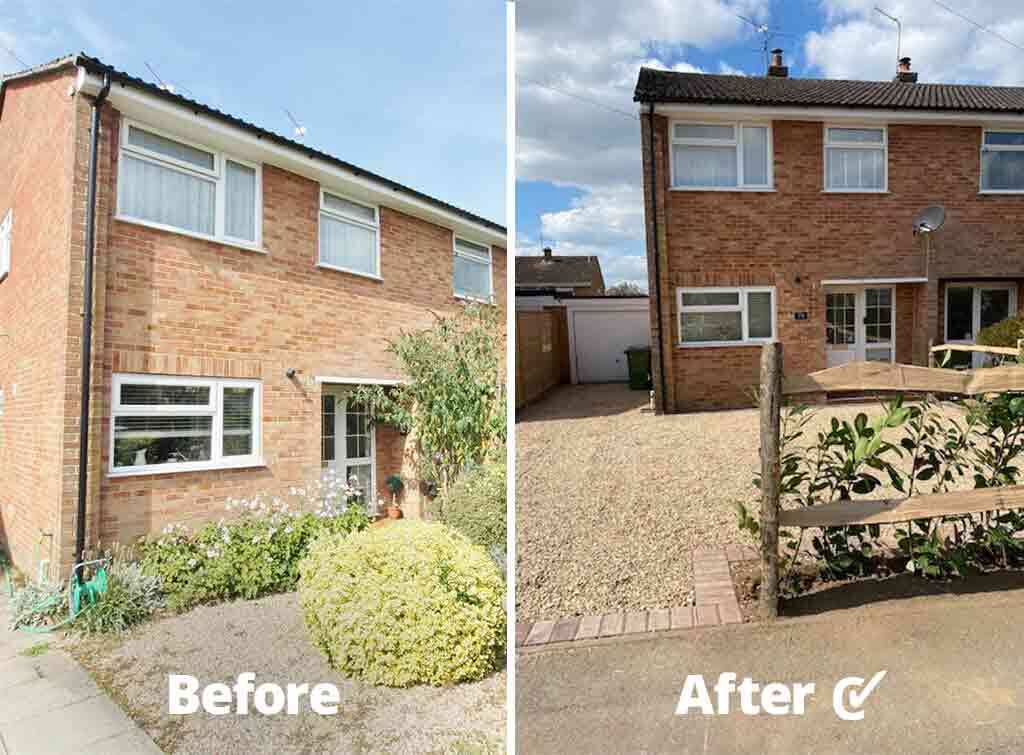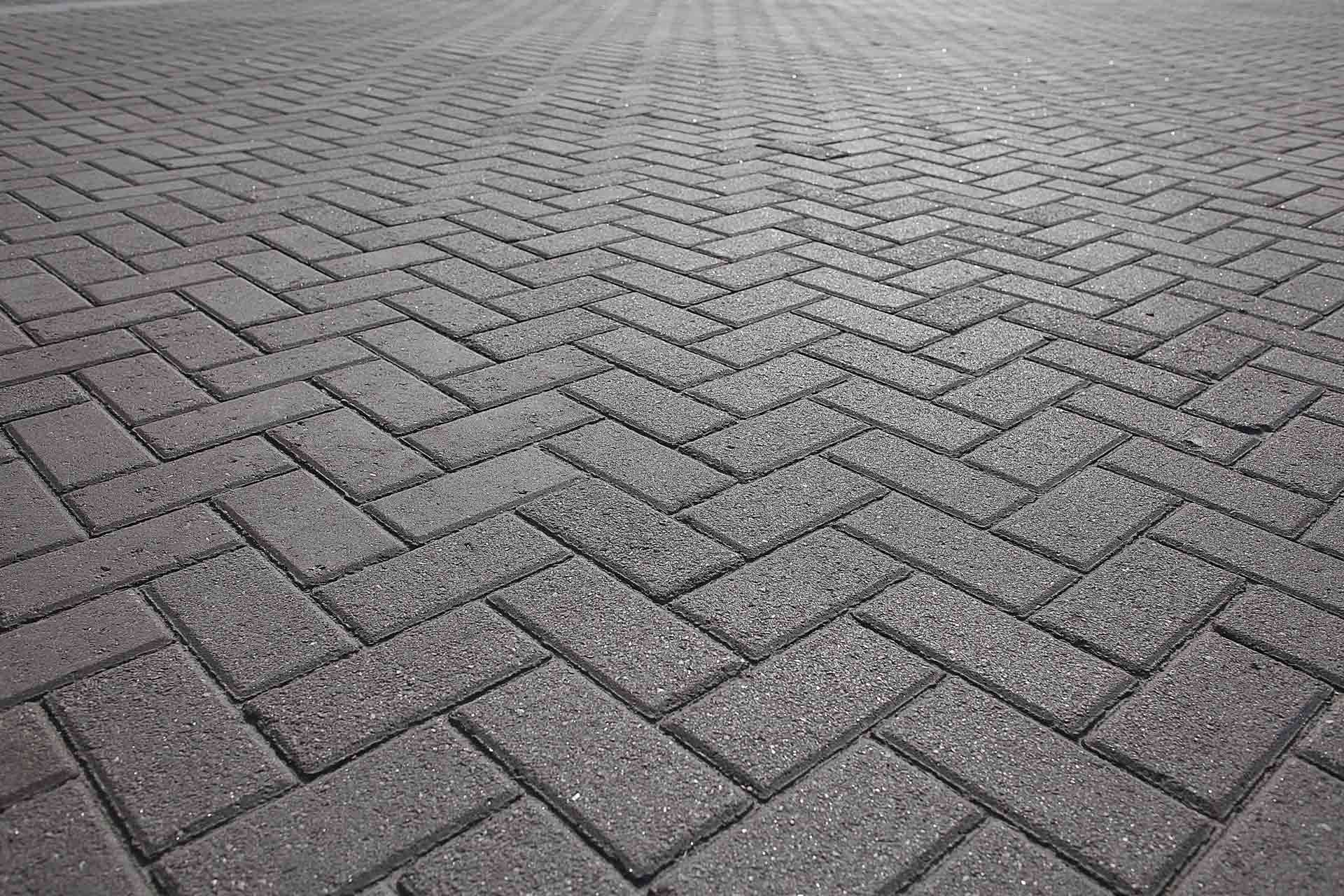Blog>Expert Advice>Should you turn your front garden into a parking space?
Last updated: 10 February 2025
Should you turn your front garden into a parking space?
Turning your front garden into a parking spot is becoming a popular home improvement project. Find out all you need to know in our expert guide.

Not being able to park near your home on a busy urban street can be incredibly frustrating. But this is just one of the reasons why many UK homeowners choose to turn their front garden into a parking spot.
If you're considering this project for your property, you're in the right place. Here, we cover everything you need to know from permissions to prices, the process, and the professionals you need to make it happen.
See the tradespeople we've checked and recommend for your job
Why turn your front garden into a parking space?
If you're shelling out on parking permits to park your vehicle near your home, you may have considered turning your front garden into a parking spot.
Aside from saving hundreds of pounds in parking permits (and visitor permits!) every year, creating a dedicated parking space on your property is super convenient. No more traipsing up the street with bags of heavy groceries!
Perhaps you have an EV and want the ease of installing a home charging unit rather than running a cable across the pavement.
Or maybe you're keen for a bit of added security - and consequently, reduced car insurance premiums.
There are also long-term wins to be had. A private driveway is an attractive selling point for prospective buyers, hence why it can add between 5-10% to the value of your home.
Are there any downsides to turning your garden into parking?
When weighing up the pros and cons of turning your front garden into a driveway, you should know that it's not a cheap project.
You're looking at a good few thousand pounds (more on this later). However, as outlined above, it's an investment that also creates savings down the line.
The other immediately obvious downside is removing the green space at the front of your home, which can negatively impact the local wildlife. Having said that, a landscaper can help create designs that include plants and flowers to encourage biodiversity.

Are you allowed to turn your front garden into parking?
Generally speaking, yes, most homeowners are allowed to turn their front garden into parking. However, there are two main considerations to be aware of:
1. Access - If you don't already have a dropped kerb outside your property, you will need to arrange for this to happen to use your new driveway
2. Drainage - If your new driveway is larger than 5m² and you're using a non-permeable material, you will need to apply for planning permission
NB. If you live in a listed building or conservation area, it's always best to contact your local planning authority to check permissions before you begin work.

On Checkatrade, you'll only find trades who meet our high standards and pass up to 12 checks.
Turning your front garden into parking: the process
1. Planning permission
The first stage in turning your front garden into a parking space is gaining the necessary permissions.
You won't usually need planning permission to turn your front garden into parking - as long as you install a driveway that is SuDS compliant.
A SuDS-compliant surface is essentially a surface that is permeable - or has an installed soakaway or swale - so that rainwater doesn't flow from your driveway into a public drain.
Gravel is an example of a SuDS-compliant driveway material.
In essence, if you're planning a front driveway that's over 5m2 and is not SuDS compliant, you'll need planning permission. We go into more detail in our new driveway checklist.
2. Dropping the kerb
If a dropped kerb doesn't already exist, you'll need to invest in dropped kerb installation to create the entrance to your new driveway.
The local authority owns the pavement between your property and the street, so you'll need their permission.
An inspector will come out to assess the pavement outside your home. They'll look at whether it would be safe and compliant to drop the kerb and report whether any additional work is required to do so. For example, the removal of a tree or moving a manhole cover.
Many councils have a list of pre-approved dropped kerb contractors that they require you to work with. However, depending on their individual policies, they may allow you to choose your own contractor once planning permission has been granted.
3. Installing your new driveway
You can now move forward with the installation of the driveway itself. A professional driveway contractor will take care of the whole process for you, ensuring:
The excavation of the existing front garden and waste removal
Adequate drainage if you're using a non-permeable driveway material such as tarmac or block paving
The sub-base/foundations are solid - failure to do this could result in your new driveway sinking and becoming uneven
Your chosen driveway material is suitable for its intended use and is installed to a high standard
Take a look at our guide to driveway materials to help select the best option for your needs and budget.
See the tradespeople we've checked and recommend for your job
How much does it cost to turn your front garden into a parking space?
The cost of turning your front garden into parking will depend on several factors:
The size of the area to be excavated and converted into a driveway
The driveway material you choose
Whether you need drainage
Whether you need a dropped kerb
The complexity of your designs and any soft landscaping you incorporate
Here are a few example costs to help you budget for the work.
Cost to tarmac your front garden
If you want to tarmac your front garden, you can expect to pay on average £11,500*. This includes ballpark costs for excavation, drainage, and sub-base; the tarmac itself, dropping the kerb, plus permissions.
Cost to gravel your front garden
Costs to gravel your front garden will typically start at around £4,750*. This includes excavation, sub-base, and the gravel but assumes you don't need a dropped kerb.
This does not include drainage costs as gravel is permeable. This means you don't need to pay for drainage or planning permission for the driveway itself.
Cost to block pave your garden
To create a driveway from block paving, you could be looking at costs of up to around £18,500*. This includes ballpark costs for excavation, drainage, and sub-base; the block paving, dropping the kerb plus permissions.
For more detailed information, take a look at our dedicated cost guide. Here, we break down the individual costs of turning a front garden into a driveway including excavation, drainage, sub-base, the cost of various driveway materials, dropping the kerb, and planning permission.
Contact or pay a trade through Checkatrade and you’re covered by our 12-month guarantee of up to £1,000*

Find top-rated driveway installers near you
Keen to get going with your driveway installation? With Checkatrade, it's easy to find and hire the best tradespeople for the job.
All our trades have to pass up to 12 checks, so you'll only find professionals who meet our high standards on Checkatrade.
And when you find and hire a tradesperson through us, we guarantee their work up to £1,000. Guaranteed for 12 months – Eligibility and T&Cs apply.
Search your postcode now to find driveway installers in your area.
See the tradespeople we've checked and recommend for your job
*Ballpark costs for a new 50m² driveway
More Expert Advice Articles
More Driveway / Patio Design Articles
See the tradespeople we've checked and recommend for your job





